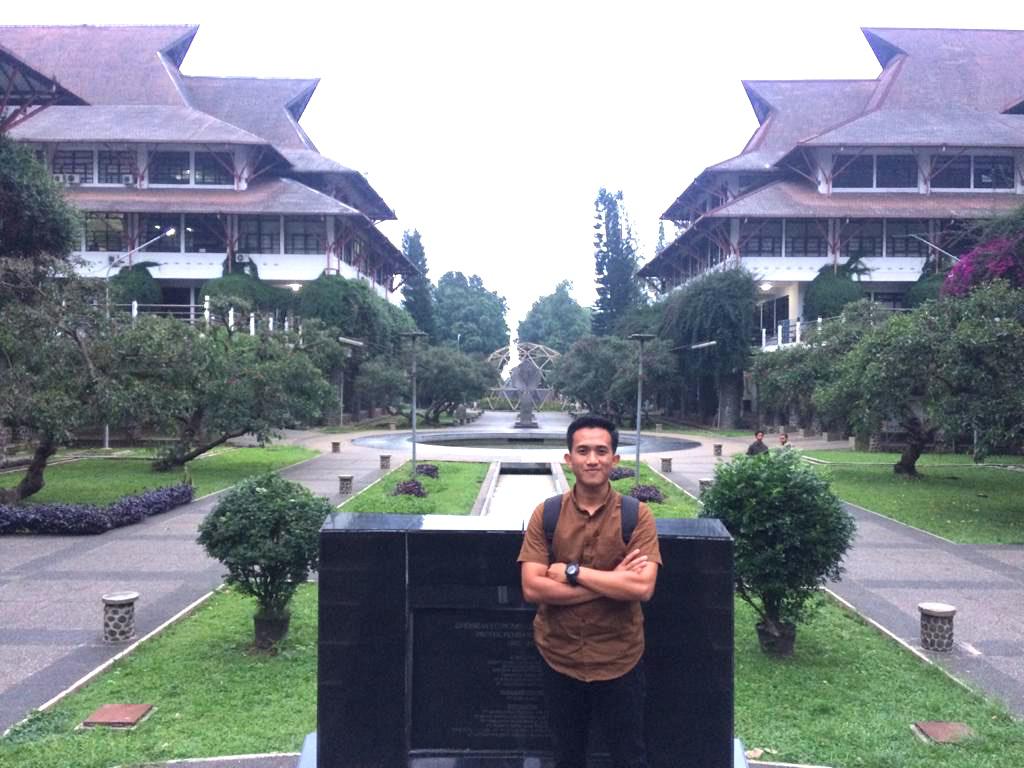Abstract
Efek dari lingkungan yang panas pada kinerja aerobik belum didokumentasikan dengan baik. Suhu dan kelembaban suatu lingkungan berpengaruh terhadap fisiologis tubuh dan dapat memengaruhi penampilan fisik, serta proses oxygen intake (VO2Max) yang kurang optimal. Hal ini menimbulkan sebuah pertanyaan apakah suhu lingkungan dapat berpengaruh terhadap kondisi tubuh pada saat berolahraga. Dengan demikian tujuan dari penelitian ini adalah untuk menguji efek suhu lingkungan yang berbeda terhadap VO2max pada atlet PPLP se-Pulau Jawa Indonesia. Penelitian ini menggunakan metode studi observasional, di manaeneliti hanya melakukan observasi pada satu saat, tanpa memberikan intervensi pada variabel yang akan diteliti. Subjek dalam penelitian ini terdiri dari 80 Atlet PPLP se-Pulau Jawa. Di antaranya yaitu; Jawa Tengah (20 Atlet), Jawa Timur (20 Atlet), Jawa Barat (20 Atlet) dan DIY Yogyakarta (20 Atlet). Hasil penelitian ini menunjukkan bahwa VO2max secara signifikan dapat berkurang pada suhu dan kelembaban 34°C/70% dan 32°C/60% dibandingkan dengan suhu dan kelembaban 23°C/69% dan 31°C/50%. Kinerja aerob sangat dipengaruhi oleh fungsi kardiovaskular. Lingkungan yang panas meningkatkan aliran darah kulit yang mengubah fungsi kardiovaskular. Sehingga hal ini dapat memengaruhi penurunan terhadap oxygen intake (VO2max).
References
Arngrímsson, S. Á., Petitt, D. S., Borrani, F., Skinner, K. A., & Cureton, K. J. (2004). Hyperthermia and maximal oxygen uptake in men and women. European Journal of Applied Physiology, 92(4–5), 524–532. https://doi.org/10.1007/s00421-004-1053-1
Backx, K., Mc Naughton, L., Crickmore, L., Palmer, G., & Carlisle, A. (2000). Effects of differing heat and humidity on the performance and recovery from multiple high intensity, intermittent exercise bouts. International Journal of Sports Medicine, 21(6), 400–405. https://doi.org/10.1055/s-2000-3833
Camboni, D., Philipp, A., Schebesch, K.-M., & Schmid, C. (2008). Accuracy of core temperature measurement in deep hypothermic circulatory arrest. Interactive CardioVascular and Thoracic Surgery, 7(5), 922–924. https://doi.org/10.1510/icvts.2008.181974
Cheuvront, S. N., Kenefick, R. W., Montain, S. J., & Sawka, M. N. (2010). Mechanisms of aerobic performance impairment with heat stress and dehydration. Journal of Applied Physiology, 109(6), 1989–1995. https://doi.org/10.1152/japplphysiol.00367.2010
Crewe, H., Tucker, R., & Noakes, T. D. (2008). The rate of increase in rating of perceived exertion predicts the duration of exercise to fatigue at a fixed power output in different environmental conditions. European Journal of Applied Physiology, 103(5), 569–577. https://doi.org/10.1007/s00421-008-0741-7
Gisolfi, C. V. (1983). Temperature regulation during exercise: Directions—1983. Medicine and Science in Sports and Exercise, 15(1), 15–20. https://doi.org/10.1249/00005768-198315010-00006
Göbölös, L., Philipp, A., Ugocsai, P., Foltan, M., Thrum, A., Miskolczi, S., Ohri, S. K. (2014). Reliability of different body temperature measurement sites during aortic surgery. Perfusion (United Kingdom), 29(1), 75–81. https://doi.org/10.1177/0267659113497228
Mintarto, E., & Fattahilah, M. (2019). Efek Suhu Lingkungan Terhadap Fisiologi Tubuh pada saat Melakukan Latihan Olahraga. JSES: Journal of Sport and Exercise Science, 2(1), 9-13.
Park, S. G., Bae, Y. J., Lee, Y. S., & Kim, B. J. (2012). Effects of rehydration fluid temperature and composition on body weight retention upon voluntary drinking following exercise-induced dehydration. Nutrition Research and Practice, 6(2), 126–131. https://doi.org/10.4162/nrp.2012.6.2.126
Podrabsky, J. E., Stillman, J. H., & Tomanek, L. (2015). Biochemical adaptation: Unity in principles, diversity in solutions. Journal of Experimental Biology, 218(12), 1797–1798. https://doi.org/10.1242/jeb.124479
Sacha, J. J., & Quinn, J. M. (2011). The environment, the airway, and the athlete. Annals of Allergy, Asthma and Immunology, 106(2), 81–87. https://doi.org/10.1016/j.anai.2010.06.004
Sandi, I. N. (2014). Pengaruh Suhu Dan Kelembaban Relatif Udara Terhadap Penampilan Fisik Dalam Olahraga. Seminar Nasional Prodi Biologi F. MIPA UNHI, 282–287. Retrieved from http://digilib.mercubuana.ac.id/manager/t!@file_artikel_abstrak/Isi_Artikel_730549414152.pdf
Sawka, M. N., Cheuvront, S. N., & Kenefick, R. W. (2012). High skin temperature and hypohydration impair aerobic performance. Experimental Physiology, 97(3), 327–332. https://doi.org/10.1113/expphysiol.2011.061002
Snell, P. G., Stray-Gundersen, J., Levine, B. D., Hawkins, M. N., & Raven, P. B. (2007). Maximal oxygen uptake as a parametric measure of cardiorespiratory capacity. Medicine and Science in Sports and Exercise, 39(1), 103–107. https://doi.org/10.1249/01.mss.0000241641.75101.64
Stensrud, T., Berntsen, S., & Carlsen, K. H. (2006). Humidity influences exercise capacity in subjects with exercise-induced bronchoconstriction (EIB). Respiratory Medicine, 100(9), 1633–1641. https://doi.org/10.1016/j.rmed.2005.12.001
Taylor, C. A., Cheng, C. P., Espinosa, L. A., Tang, B. T., Parker, D., & Herfkens, R. J. (2002). In vivo quantification of blood flow and wall shear stress in the human abdominal aorta during lower limb exercise. Annals of Biomedical Engineering, 30(3), 402–408. https://doi.org/10.1114/1.1476016
Tyka, A., Palka, T., Tyka, A., Cison, T., & Szygula, Z. (2009). The influence of ambient temperature on power at anaerobic threshold determined based on blood lactate concentration and myoelectric signals. International Journal of Occupational Medicine and Environmental Health, 22(1), 1–6. https://doi.org/10.2478/v10001-009-0005-8
Zhao, J., Lorenzo, S., An, N., Feng, W., Lai, L., & Cui, S. (2013). Effects of heat and different humidity levels on aerobic and anaerobic exercise performance in athletes. Journal of Exercise Science and Fitness, 11(1), 35–41. https://doi.org/10.1016/j.jesf.2013.04.002
Authors who publish with this journal agree to the following terms:
- Copyright on any article is retained by the author(s).
- The author grants the journal, the right of first publication with the work simultaneously licensed under a Creative Commons Attribution License that allows others to share the work with an acknowledgment of the work’s authorship and initial publication in this journal.
- Authors are able to enter into separate, additional contractual arrangements for the non-exclusive distribution of the journal’s published version of the work (e.g., post it to an institutional repository or publish it in a book), with an acknowledgment of its initial publication in this journal.
- Authors are permitted and encouraged to post their work online (e.g., in institutional repositories or on their website) prior to and during the submission process, as it can lead to productive exchanges, as well as earlier and greater citation of published work.
- The article and any associated published material is distributed under the Creative Commons Attribution-ShareAlike 4.0 International License





